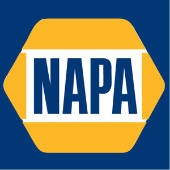-
Welcome to Auto Parts Forum
Whether you are a veteran automotive parts guru or just someone looking for some quick auto parts advice, register today and start a new topic in our forum. Registration is free and you can even sign up with social network platforms such as Facebook, X, and LinkedIn.
Car Care Month: A DIY Car Maintenance Checklist
-
Similar Topics
-
By Counterman
Women in Auto Care is introducing its revamped Connection Circle, Women of the World. The event will take place the first Wednesday of every month beginning in May.
“Join Dunya and Ellonyia as they host this engaging connection circle to discuss ways in which women can strengthen their visibility and amplify their roles within the automotive industry! The goal of this connection circle is to break barriers and challenge global stereotypes,” the announcement on LinkedIn said.
The goal is to unite women from every corner of the globe to inspire, support, and network. Together, we’ll amplify voices, break barriers, and forge meaningful connections, Women in Auto Care posted.
link hidden, please login to view will take place on May 1at 12 p.m. CST. The post
link hidden, please login to view appeared first on link hidden, please login to view.
link hidden, please login to view -
By Counterman
The Auto Care Association recently announced the addition of Jacki Lutz as director of content to its communications team.
As the director of content, Lutz will be tasked with leading a cross-functional and multimedia content strategy, development and execution across all platforms. Lutz also will be responsible for shaping and driving content initiatives to meet the association’s business objectives; enhancing brand presence; and engaging with current and prospective members.
With more than a decade of marketing and communications experience in the automotive aftermarket, “Lutz’s mastery of telling brands’ stories in a clear and compelling way will enable the association to expand the reach of its mission to more industry professionals both across the supply chain and up and down the business ladder,” the association said in a news release.
“The Auto Care Association has spent the past several years working on building an organization that meets its members’ needs of today with solutions that can carry them into the industry of tomorrow,” said Bill Hanvey, president and CEO. “A vital part of being that kind of a dependable association for its members means being able to connect with them – all of them – and that begins with great communication. The addition of Jacki Lutz to our communications team will help the Auto Care Association to grow its connections with our members and share their stories in an impactful way with the entire auto care industry.”
Prior to joining the Auto Care Association, Lutz served as the senior manager of global corporate marketing communications for Sensata Technologies, where she created and executed a new centralized marketing communication strategy for all of its business units, including aerospace, automotive, heavy-duty, clean energy and aftermarket. Since 2013, Lutz previously held additional roles within Sensata Technologies, including global head of communications, training and e-commerce, auto and aftermarket; global head of marketing and communications, aftermarket; and marketing and communications manager, NA aftermarket.
Lutz has been an active member of the Auto Care Association, participating in and providing leadership to the association’s Marketing and Communications Committee; the Young Auto Care Network Group (YANG); the AWDA Manufacturer’s Advisory Council; and the Women in Auto Care Executive Board.
Lutz has contributed to several other prominent industry organizations throughout her career. She served as president of the Automotive Communications Council and has contributed her expertise to the boards of MEMA Aftermarket’s Marketing Executive Council and the Automotive Aftermarket Charitable Foundation.
Lutz’s remarkable contributions have been recognized with prestigious accolades, including the Auto Care Impact Award, SEMA’s 35 under 35 distinction, membership in Babcox’s Women at the Wheel and induction into Tire Review’s esteemed Club 3633.
The post
link hidden, please login to view appeared first on link hidden, please login to view.
link hidden, please login to view -
By Counterman
The Auto Care Association announced it has been
link hidden, please login to view. “This prestigious award is a testament to the association’s commitment to creating an inclusive, supportive and dynamic work environment for its employees,” Auto Care said in a news release.
With a remarkable 95% of employees affirming that the Auto Care Association is a great place to work, the organization stands out significantly above the national average. This recognition is based on direct feedback from employees, provided as part of the Great Place to Work’s rigorous, data-driven methodology.
The survey highlighted several areas where the Auto Care Association excels, including management’s approachability, effective coordination and assignment of tasks and the provision of necessary resources and equipment to employees.
Headquartered in Bethesda, Maryland, the Auto Care Association employs more than 40 U.S.-based workers and is renowned for its advocacy, educational, networking, technology and market-intelligence resources. It plays a pivotal role in the automotive aftermarket, driving innovation and competitiveness through its evaluation of market trends and development of new tools to adapt to evolving patterns.
“This certification is not just a milestone for our association but a reflection of the hard work, dedication, and passion of our team,” said Bill Hanvey, president and CEO of the Auto Care Association. “We are deeply committed to ensuring our workplace is not only rewarding and supportive but also fosters the growth and development of all our employees.”
The Auto Care Association added that its “culture is built on a foundation of mutual respect, collaboration and a shared vision for the future of the automotive aftermarket.”
Auto Care uses the acronym TCIF to summarize its corporate values. It stands for Teamwork, Curiosity, Integrity and Fun. These values “have cultivated a workplace where 97% of employees feel management is approachable and hires people who fit well within the organization,” according to Auto Care.
“Great member service starts with a strong internal foundation,” said Lea Diamond, vice president, people operations, for the Auto Care Association. “Our strengths internally are reflected in the level of service and care we provide to our members and the industry.”
The post
link hidden, please login to view appeared first on link hidden, please login to view.
link hidden, please login to view 
-
By NAPA
Is your car not shifting gears like it used to? An automatic transmission makes driving much less complicated than the manual gear (stick shift) alternative. But that convenience comes at the price of complexity. When an automatic transmission equipped car won’t shift gears, there could be several potential issues. These issues can range from a simple fix to needing a complete transmission rebuild. Below is technical expertise on “Why is my automatic car not shifting gears?”
Low Transmission Fluid link hidden, please login to view
Your automatic transmission relies on hydraulic fluid pressure to operate. The pump pulls
link hidden, please login to view from the transmission pan reservoir to actuate different components. If the transmission fluid level gets low enough, the pump will be unable to push fluid where it needs to go. Even worse, the pump will pull air into the system, which could lead to a lack of lubrication that damages parts. If you are lucky, your vehicle has a transmission fluid dipstick so you can easily check the fluid level according to the instructions in the owner’s manual. If your vehicle does not have a transmission fluid dipstick but is “
link hidden, please login to view”, that doesn’t prevent you from checking the fluid level. In most cases, the fluid can be checked via a fill plug, but the transmission has to be at a certain temperature and the vehicle must be level. This isn’t an easy task, so it might be best to have your local link hidden, please login to view do it for you. Faulty Shift Solenoid
We just mentioned how an automatic transmission relies on pressurized fluid to operate, but that fluid also needs to be routed to where it is needed. In a modern, electronically controlled automatic transmission, shift solenoids control the flow of transmission fluid. If the shift solenoid is faulty, then the fluid won’t be routed to the desired shift actuator. In older non-electronically controlled transmissions, shifting was controlled by shift valves, but the idea is the same. Shift solenoids can wear out or get stuck, leading to a no-shift condition. Fixing a faulty shift solenoid usually requires removing the transmission fluid pan to access the transmission valve body.
Low Transmission Fluid Pressure
You should be seeing a pattern of how important hydraulic fluid is to the operation of an automatic transmission. If the transmission fluid level is fine, there may still be a problem with the fluid pressure. Low fluid pressure can be caused by a worn out pump, clogged fluid passages or a clogged transmission fluid filter. A lack of shifting car gears due to low fluid pressure usually means it is time for a
link hidden, please login to view. If the problem is with the pump itself, then you are probably looking at a transmission rebuild. Bad Transmission Control Module
Most modern automatic transmissions have an electronic
link hidden, please login to view (TCM). The control module takes input from various sensors, and decides how the transmission should react. Depending on where the control module is mounted, it can lead a very hard life. Extreme temperatures, vibrations, leaking fluids and sometimes even how the circuit board is built can all lead to failures of microchips and other electronic components. If the check engine light is on while you are having shifting problems, the TCM may be the issue. Broken Shift Cable
Each time you drive, the shifter is moved at least twice, once for driving and again for park. That movement adds up over the years. While an automatic transmission doesn’t have the complicated shifting mechanism of a manual transmission, there is usually a physical connection between the shifter and the transmission. Modern
link hidden, please login to view usually have plastic components that can break down over time. There may also be bushings that get worn out. The shift cable itself is usually metal and rarely breaks, but the pieces connecting it to the transmission can possibly fail. Shift Lock Engaged
If the car is not shifting into gear from park, then the issue might be the gear shift interlock. Most modern vehicles have a lockout on the automatic gear shifter that requires the brake pedal to be pressed first. If the brake pedal isn’t pressed, the shifter won’t move. It is possible that the brake pedal sensor doesn’t read that the pedal is pressed, or a break in the shift interlock circuit interrupts the connection. The shift lock can be
link hidden, please login to view. Worn Out Bands
Just like how brake pads can wear out, so can the friction materials inside the transmission like the bands. Transmission bands hold certain components in place, while others are allowed to rotate. When this happens, the transmission won’t go into certain gears. Unfortunately worn out bands usually mean a complete transmission overhaul. Material from the worn out bands can make their way into sensitive fluid passages, clogging them or causing accelerated wear
Failed Throttle Sensor
This one may seem odd, but gauging how much throttle input the driver is giving makes a big difference in how the transmission acts. Whether the input is from a
link hidden, please login to view or a cable, if the driver pushes down the gas pedal, the transmission needs to change gears. But if that input isn’t received, the transmission has no idea what the driver wants to do. If the transmission doesn’t know the driver is hitting the gas, it might not shift into the next gear. Even worse, on some older transmissions, if the transmission isn’t linked correctly to the throttle input, severe damage can be done. If your transmission isn’t shifting like it used to, simply head to your local
link hidden, please login to view center. Our team of ASE-certified technicians have the expertise and training to diagnose your automatic transmission issues. As a bonus, your repair is covered by our free 24-Month/24,000-Mile link hidden, please login to view (parts and labor on qualifying repairs and services), which spans across the entire nationwide NAPA Network, including 17,000+ NAPA Auto Care center locations. Photos courtesy of
link hidden, please login to view. The post
link hidden, please login to view appeared first on link hidden, please login to view.
link hidden, please login to view
-




Recommended Posts
Join the conversation
You can post now and register later. If you have an account, sign in now to post with your account.
Note: Your post will require moderator approval before it will be visible.